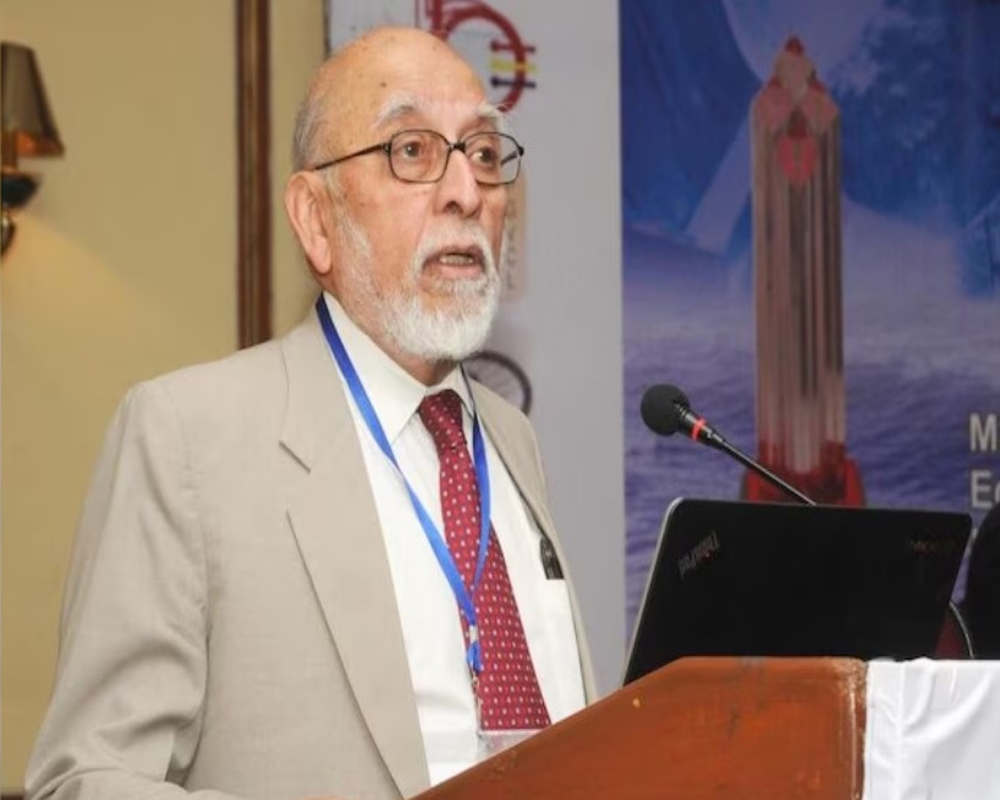Dr. M. R. Srinivasan and India’s Nuclear Power Programme | 23 May 2025
Why in News?
Dr. Malur Ramasamy Srinivasan, former Chairman of the Atomic Energy Commission (AEC) and a pioneer of India’s nuclear programme, passed away, marking the end of a remarkable era in Indian atomic energy.
Who was Dr. Malur Ramasamy Srinivasan?
- Contributions: Srinivasan joined the Department of Atomic Energy (DAE) in 1955 and worked under Dr. Homi Jehangir Bhabha, contributing to India’s first nuclear reactor, Apsara.
- He served as the Principal Project Engineer for India’s first atomic power station at Tarapur and later as the Chief Project Engineer for the Madras Atomic Power Station.
- He became the Founder-Chairman of the Nuclear Power Corporation of India Limited (NPCIL), under his leadership, 18 nuclear power units were developed.
- Global and National Influence: Dr. Srinivasan served as Senior Advisor to the International Atomic Energy Agency, Vienna (1990–92), Member of the Planning Commission (1996–98), and National Security Advisory Board (2002–04, 2006–08). He also chaired the Karnataka Task Force on Higher Education (2002–04).
- Honours and Awards: Dr. Srinivasan received Padma Shri (1984), Padma Bhushan (1990), and Padma Vibhushan (2015).
What is India’s Nuclear Power Programme?
- About: India’s Nuclear Power Programme was primarily formulated by Dr. Homi J. Bhabha, a prominent Indian physicist often called the "father of the Indian nuclear program."
- It is a strategic, three-stage plan aimed at harnessing atomic energy primarily for peaceful purposes, such as electricity generation, while ensuring self-reliance in energy resources.
- It is designed to make optimal use of India’s limited uranium reserves and abundant thorium resources.
- India’s programme is based on a closed fuel cycle; each stage generates the fuel for the next, enhancing resource utilisation and reducing waste.
- Three-Stage Nuclear Power Programme:
- Stage 1: Using Pressurized Heavy Water Reactors (PHWRs) fueled by natural uranium to generate power and produce plutonium and depleted uranium as by-products.
- In Stage 1, it is estimated that about 420 gigawatt-years (GWe-yrs) of electricity can be produced.
- Stage 2: Deploying Fast Breeder Reactors (FBRs) that use plutonium from PHWRs to breed more fuel while generating electricity (additional 54,000 GWe-yrs). FBRs also produce uranium-233 from thorium.
- Stage 3: It involves utilizing thorium-based reactors to convert thorium into fissile uranium-233, ensuring a sustainable and long-term nuclear fuel supply.
- It aims at large-scale power generation using India's abundant thorium reserves. This stage is projected to yield about 358,000 GWe-yrs of electricity, helping secure energy needs beyond the depletion of coal.
- The world's first thorium-based nuclear plant, "Bhavni," using Uranium-233, is being set up at Kalpakkam in Tamil Nadu.
- Stage 1: Using Pressurized Heavy Water Reactors (PHWRs) fueled by natural uranium to generate power and produce plutonium and depleted uranium as by-products.
- Current Status: Stage 1 is commercially mature. The second stage with FBRs began with a 500 MWe reactor at Kalpakkam, Tamil Nadu.
- Stage 3 thorium-based systems have been developed at the pilot scale; however, commercial deployment is yet to begin.
- Additionalities to the Three-Stage Program: To accelerate nuclear power capacity, India is complementing its three-stage program with imported reactors.
- Kudankulam Nuclear Power Project (KKNPP), built with Russian collaboration, currently operates two 1,000 MWe VVER (water-water energy) reactors since 2013 and 2016, with four more under construction.
- VVER reactors, known for safety and reliability, are used globally and have clocked over 2,000 reactor-years of operation.
- Nuclear energy is the 5th-largest source of electricity for India which contributes around 3% of the total electricity generation in the country.
- Kudankulam Nuclear Power Project (KKNPP), built with Russian collaboration, currently operates two 1,000 MWe VVER (water-water energy) reactors since 2013 and 2016, with four more under construction.
- Future Plans and Projections: The study by the Department of Atomic Energy (DAE), estimates the nuclear share to be about 8.6% by the year 2032 and 16.6% by the year 2052.
|
Drishti Mains Question: Explain India’s three-stage nuclear power programme and evaluate its role in achieving self-reliance in nuclear energy. |
UPSC Civil Services Examination, Previous Year Questions (PYQs)
Prelims
Q. In India, why are some nuclear reactors kept under “IAEA safeguards” while others are not? (2020)
(a) Some use uranium and others use thorium
(b) Some use imported uranium and others use domestic supplies
(c) Some are operated by foreign enterprises and others are operated by domestic enterprises
(d) Some are State-owned and others are privately owned
Ans: (b)
Mains
Q. With growing energy needs should India keep on expanding its nuclear energy programme? Discuss the facts and fears associated with nuclear energy. (2018)



